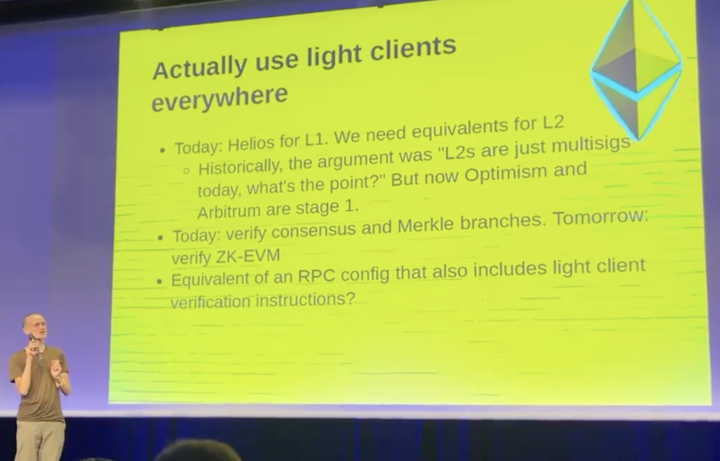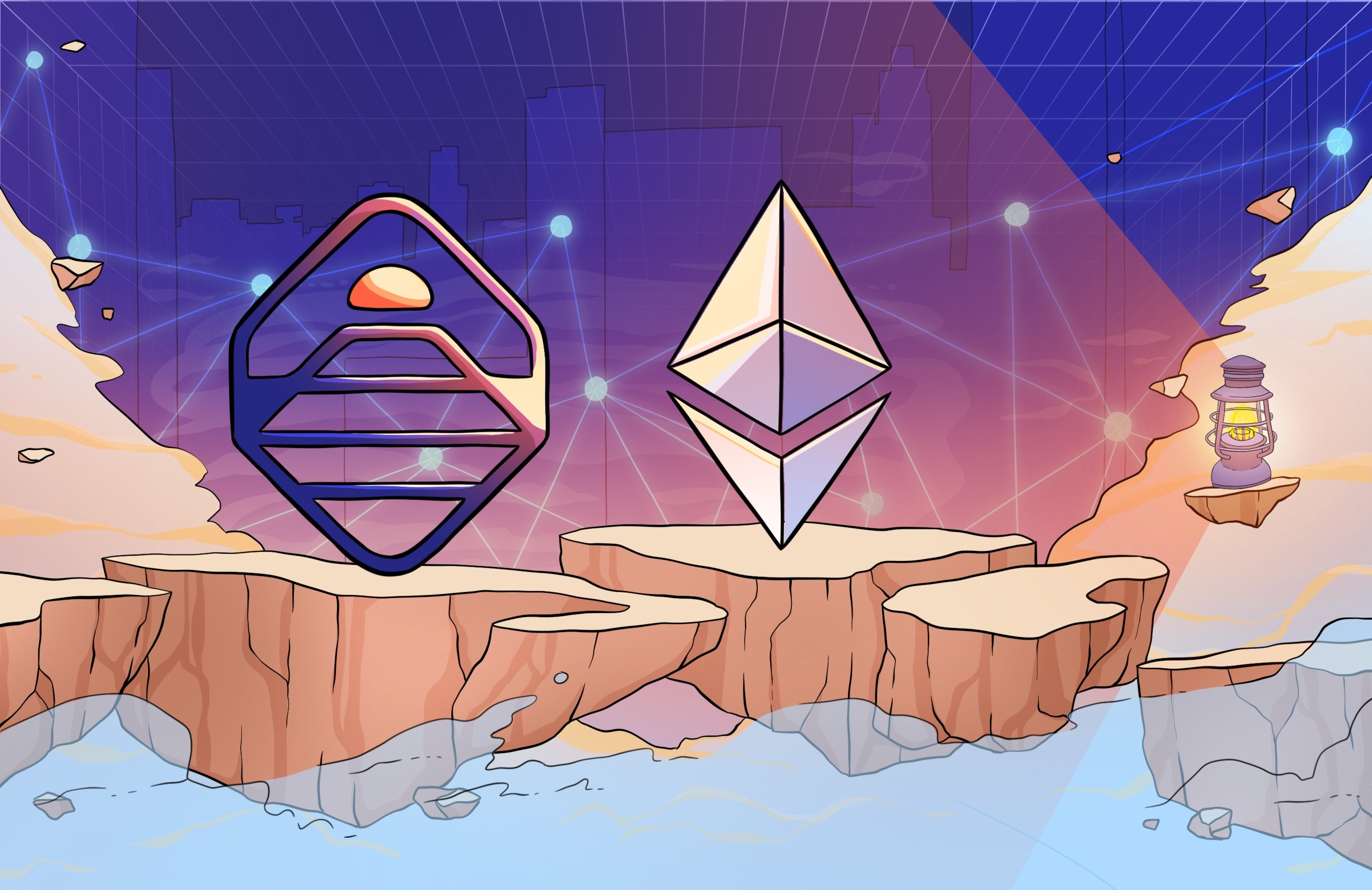Lantern’s vision
To ensure that access to Ethereum is free, and globally available.
Lantern’s goal is to allow easy and private access to Ethereum on any device without having to run a full node or relying on providers that host nodes. Its future capabilities include being able to submit transactions to the network, access smart contract data, and trustlessly verify any on-chain information — all in a peer-to-peer manner.
Lantern’s end game is to be widely distributed through both financial and real world supply-chains. Integrated into IoT networks, smart locks, crypto wallets, points of sale and more.
Why Ethereum needs to exist?
Given the amount of ETH staked to secure Ethereum, the network's security level makes it highly resistant to economic attacks. In fact, the cost of attacking is so high that even entire countries would find it too expensive to succeed.
This is made possible by its consensus mechanism, commonly referred to as Proof of Stake. A really important property provided by this mechanism is: immutability. Without this property, there would be no useful reason to use Ethereum, and a conventional database would be sufficient.
As long as Ethereum maintains that property, it will remain an invaluable platform to use as a source of truth for computation that cannot be corrupted by a single entity. As of today, the market has already validated Ethereum's utility, with a number of use-cases emerging in finance, gaming, enterprise, and more, underscoring its importance in today's digital landscape.
Keeping Ethereum free to access from anywhere
By running a full node, anybody can access Ethereum for free from anywhere globally. However, the barrier to running a full node is very high in terms of hardware requirements and regular maintenance. To prevent the need for running a full node, multiple providers host full nodes for users. They offer a simple endpoint that can be used to interact with Ethereum. Despite this convenience, there are still three major downsides for relying on these solutions:
- Lack of security: There is no way for users to trustlessly verify the data returned from the provider's endpoint.
- Restricted access: Access to Ethereum still remains restricted due to rate limits and legal requirements.
- No privacy: Any usage data collected can be sold to third parties for surveillance purposes or gaining an information edge for trading purposes.
In the table below, we highlight the key differences between each solution that provides access to Ethereum:

We believe that everyone deserves free access to Ethereum from anywhere in the world without the downsides mentioned above. This is why we’re building a light client that is fully peer-to-peer, providing all the necessary functionalities needed for interacting with Ethereum.
Current state of light clients
For a light client to be useful, it has to provide at least some capabilities that are available with a full client. This includes the ability to submit transactions, provide read access to on-chain data, and verify if it belongs to the canonical chain.
At present, Ethereum light clients do not provide all these capabilities in a standalone, peer-to-peer application that can run on any device. These capabilities are still in development, and teams working in this area have been focusing on being able to verify data from an untrusted endpoint given by a node provider. For example, light clients such as Helios, and Lodestar, and Nimbus are already available for use today.
Another important project that is gaining traction is the Portal Network. The project's goal is to build multiple peer-to-peer networks that are independent of each other, with very few resource requirements for joining. These include a history network for serving historical data, a beacon network that allows light clients to track Ethereum's consensus, and a state network for accessing data related to smart contracts and addresses.
With Lantern, our goal is to have a light client that is fully peer-to-peer, eliminating the need for any endpoint for accessing Ethereum. As a step towards this goal, we have recently developed a library (built in C#) that enables running the light client sync protocol in a fully peer-to-peer manner. The library is open-source on GitHub, and can be found using the following link:
https://github.com/Pier-Two/Lantern.Beacon/tree/main
How light clients can verify in a peer-to-peer manner?
In order for a light client to verify any on-chain information, it needs to have the ability to track Ethereum's consensus. To do so, it can use the light client sync protocol, which is designed particularly for devices with limited computational resources to track the consensus in the Beacon chain. If you're curious about how the sync protocol works, we've written a blog post that explains the process in more detail, which is available to read here.
At a high level, the Beacon chain, which runs Ethereum's Proof of Stake algorithm, features a special type of committee of validators known as the sync committee. Each validator in the sync committee has to sign the latest block to confirm its validity. When that block is published to the network, their aggregated signature is included in it, that can be verified with very light computation. To follow the sync protocol, there are two possible solutions for obtaining this data:
- Request from a full node being hosted by a node provider using a trusted endpoint
- Request directly from the p2p network made up of full nodes
The second approach effectively addresses the problems associated with relying on node providers, which were outlined in one of the previous sections. For the second approach to work, it requires full nodes to altruistically serve light client data by default over the p2p network. Currently, two consensus clients have implemented support for serving this data, and we are optimistic that more clients will add support in the future as the protocol gains more adoption:

As part of ongoing developments, there have been recent efforts to improve the sync committee protocol to include slashing, which will enhance the security of light clients. The EIP-7657 proposal is an important step towards addressing valid concerns about the sync committee's limitations. For example, the current protocol lacks penalties for sync committee members who can intentionally sign invalid blocks. This gap in security prevents certain use cases that require high assurance from being implemented.
What use cases do light clients unlock?
With free, censorship-resistant, and lightweight access to Ethereum, a host of new applications become possible. This, in turn, expands Ethereum's potential that can benefit the physical world. For instance, a mobile-compatible light client with trustless access to read smart contract state can enable innovative use cases. This includes being able to unlock smart locks with a digital signature generated from a private key.
The advantage of using Ethereum lies in its ability to facilitate helpful solutions, like key rotation, through smart contracts. Specifically, a trusted multisig can be used to recover access in the event of a lost private key. If these interactions happen on Ethereum in a peer-to-peer manner using light clients, people will not have to rely on centralised systems that have security loopholes that often limit adoption.
Another pressing use case is solving the problem of provenance in a world where the majority of online content is generated by AI. In this world, as the Internet becomes increasingly reliant on AI-driven interactions, users need to be able to trustlessly verify the intentions of other users. For example, a light client can be used to verify the authenticity of human-generated content using smart contracts by relying on the immutability property of Ethereum.
These are just a few examples of the many use cases that light clients can unlock. Some other potential applications include:
- L2 bridges for seamless interactions between Ethereum and other blockchain networks
- IoT and RFID real-world applications, such as smart locks and bicycles, that can leverage Ethereum's security and decentralisation
- Supply-chain verifiers that can use Ethereum to track and verify the authenticity of goods
- Money transmitters and crypto wallets that can utilise Ethereum's decentralised infrastructure for secure and efficient transactions
- And many more, as explored in this video
Next Steps and Getting Involved

To summarise, our next steps are to actually use light clients everywhere. We're excited to collaborate with developers and enterprises looking to harness the power of Ethereum for real-world applications. If you're interested in integrating Lantern to reduce RPC costs or exploring native light client support for Layer 2 solutions, we'd love to connect. Near the end of the year, we will also be attending Devcon in Bangkok, where we're looking forward to meeting fellow Ethereum enthusiasts and discussing the future of light clients.
Join the Conversation
Stay up-to-date with the latest Lantern developments by joining our community on Telegram or following Pier Two on X.
Sources
- https://a16zcrypto.com/posts/article/an-introduction-to-light-clients/
- https://a16zcrypto.com/posts/article/building-helios-ethereum-light-client/
- https://prestwich.substack.com/p/altair
- https://ethereum.org/en/developers/docs/nodes-and-clients/light-clients/
- https://github.com/ethereum/consensus-specs/blob/dev/specs/altair/light-client/light-client.md
- https://eips.ethereum.org/EIPS/eip-7657
- https://www.ethportal.net/
- https://lighthouse.sigmaprime.io/
- https://lodestar.chainsafe.io/
- https://nimbus.team/
- https://docs.prylabs.network/docs/getting-started
- https://consensys.io/teku




